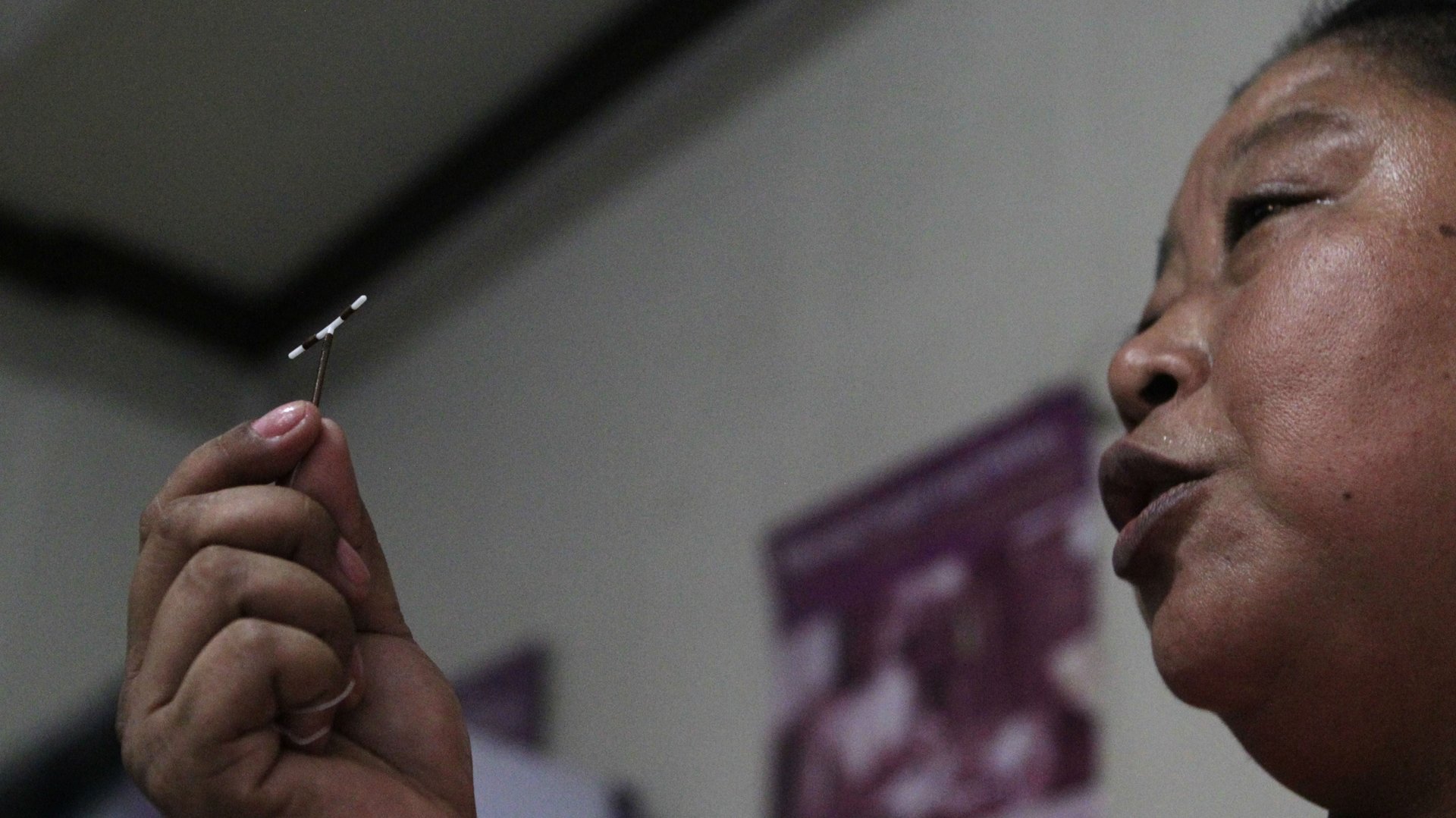After a rocky start, the IUD is now celebrating its 50th birthday
Until relatively recently, scientists didn’t really understand contraception.


Until relatively recently, scientists didn’t really understand contraception.
The earliest efforts on record to prevent unwanted pregnancy, from ancient Egypt, were to simply clog the uterus—rocks seemed to work well enough in animals like cows and camels (although the logistics of inserting those are a little fuzzy). For obvious reasons, that was not a suitable option for humans.
The first IUDs, which arrived in the early-20th century, weren’t all that much better. They were experimental one-offs, like Richard Richter’s 1909 design made of silkworm gut (paywall), the first to make it into the medical literature. In the 1920s Ernst Gräfenberg (now better known for his work identifying G-spot, which was named for him) iterated on this with a ringed design, first made of silk, then later made of metals like zinc and nickel. None of these really worked that well, and weren’t widely adopted, and Gräfenberg’s efforts were abandoned with the onset of World War II.
Over the next few decades, IUD development stalled. What little research there was, was done on very brave—or desperate—women.
In the 1960s, the Population Council started holding annual conferences on IUD development. By that time, “plastic suddenly became available and moldable,” Christian Fiala, the founder of the Museum for Contraception and Abortion in Vienna, Austria, told Atlas Obscura. “And then you can really see an explosion of ideas of different forms.”
Boy oh boy did scientists get creative. The Dittrick Medical History Center in Ohio has in it’s collection over 400 devices of all shapes and sizes used all over the world in this time period. There are IUDs that are S-shaped, rings, clovers, curly-q’s, triangles, spirals, crosses—even some that look like miniature uteruses. Importantly, some of these plastic devices contained copper, which, it was later discovered, makes for an effective contraceptive because it makes the uterus inflamed and releases ions that kill sperm.
In January 1968—50 years ago—the US Food and Drug Administration announced that (paywall), after years of collecting data, it was ready to say IUDs were safe and effective. US gynecologists began offering patients copper-ion IUDs. For the next 20 years, the most popular IUD was the Lippes Loop, invented in Buffalo, New York in 1962, which looked like an anti-fertilization snake.
Then came the Dalkon Shield.
The Shield, manufactured by the Virginia-based company AH Robins, looked something like a flattened pinecone and hit the market in 1968. Over the next two years, some 600,000 US women got one inserted. Unfortunately, the device had a terrible design flaw: a braided string tied to the end, for removal later on. “That braided string was a wick that allowed bacteria that belongs in the vagina to get into the uterus, where it caused all kinds of problems,” says Tony Tizzano, an OB/GYN at the University Hospitals Samaritan Medical Center in Ohio. Six women died, and about 200,000 women were made infertile, from using the Dalkon Shield between 1968 and 1974.
By 1985, there were so many lawsuits pending against AH Robins that the company was forced to file for bankruptcy. In 1989, American Home Products (which later became Wyeth before being acquired by Pfizer) acquired AH Robins, and in the process established a $2.4 billion trust fund to pay the pending claims.
For a period of time after that, gynecologists were extremely wary of IUDs. “When I first was in practice [30 years ago], everyone had this notion of IUDs being problematic,” says Tizzano. The tide started to turn for IUDs in the early 2000s. Perhaps this was simply because enough time had passed to clear physicians and patients’ palettes. But perhaps it was because, at that time, a brand new form of IUD was invented.
The Mirena, the first new IUD after the Dalkon debacle, came on the market in 2001. The Mirena works not through the release of copper ions like previous IUDs, but by releasing low doses of the hormone progesterone directly into the uterus. The hormones essentially convince the body that it’s already pregnant—much like the birth control pill, but without the daily requirement of remembering to take your meds. In the years following, three more types of hormonal IUDs were developed, the last of which came out in 2016. Each is slightly different in size, hormone cocktail, duration, and price.
Today, the American College of Obstetrics and Gynecology recommends IUDs or the contraceptive rod (a tiny device stuck under the skin of the arm and releases similar hormones) to every healthy women, including adolescents. It’s the birth control of choice for 14% of women in long-term relationships with men (pdf), or around 160,000 women globally. IUDs have failure rates of less than 1%, and unlike the pill or condoms, there’s essentially no responsibility on a woman (or her partner) to use it correctly to prevent pregnancy. “The pill was great except the failure rate is about 9% in college-aged women,” says Tizzano, mostly because it requires sticking to a regimented schedule—not exactly the average college student’s forte.
Tizzano thinks implantable devices are the future of birth control because they’re so convenient, effective, and reversible. Improvements will likely make them easier for providers to insert and remove, which can be a tricky, sometimes-painful procedure which may turn some potential users away. Tizzano also believes IUDs are currently being held back because doctors are uncomfortable talking about them openly. “Part of the barrier in providing better contraception is the inability to make people comfortable,” he says. If physicians can talk openly to their female patients about their anatomy, women may feel more comfortable asking more questions about their best options for birth control.